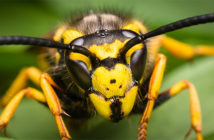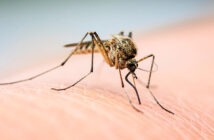How widespread are bed bug infestations? Do pest management professionals have enough knowledge and expertise to control them successfully? Is resistance to common insecticides causing practical control difficulties?
These were just three of the question delegates to the International Conference on Urban Pests (ICUP) 2017 were asked to consider in a break out session on bed bugs. Held every three years the 2017 event came to Birmingham, UK from 9 to 12 July. It is a unique gathering of pest management academics and service professionals from across the globe.
| Around 70 delegates choose to attend the bed bug workshop and they were split into two groups: those tending towards academia, chaired by Dr Richard Naylor from The Bed Bug Foundation, and those with a more practical calling, chaired by Prof Moray Anderson consultant entomologist at Killgerm. | ||
|
|
|
|
| Are infestation rates still rising? In much of the world data on the scale of bed bug infestation are simply non-existent so, with such an international gathering it was interesting to hear delegates’ opinions. The picture was far from uniform. In many European countries, Norway, Sweden, Switzerland were specifically mentioned, bed bug infestations are rising, in others, such as the UK, the feeling was that levels had reached a plateau. In much of Asia bed bug infestations were said to be widespread. Only Australia was thought to have got on top of the problem. Current control strategies There was some discussion about the use of heat treatment and concerns were raised about what is a completely unregulated part of the industry. Done properly we know heat can kill all bed bug stages but, to do it properly is not cheap, and there is plenty of scope for the cowboys to come in and make a quick buck. Heat has its place but it is not suited to every environment. In many parts of the world for example, houses are constructed to prevent heat building up. Whole room heat is best suited to heavy infestations. Smaller infestations can be dealt with in other ways. The science that bed bugs exhibit resistance to pyrethroid insecticides is convincing and yet, in practice, pyrethroids are still widely used. One delegate in the servicing group with knowledge of SE Asia pointed out that pyrethroids are still effective in his region. In practice pyrethroids do have a role in many countries, particularly as knockdown products rather than for any residual effect. There was general agreement among the academics that many pest controllers do not recognise resistance as the cause of control failures. On the other hand some in the servicing side felt poor control practices were more likely to be the reason for failure and that resistance was used as a good excuse. Role for monitoring Bed bug control is not a cheap exercise and some clients may not always be able to pay for monitoring. Others, such as hoteliers, may not want monitors to be left in rooms where guests can see them or where cleaning staff can interfere with them. There is a role here for bed bug detection dogs both for early detection and as a tool to check on success. Interestingly, in the USA, the servicing group heard how checking for bed bugs is now becoming part of the normal household servicing contract so just another pest to look out for during regular inspections. Is there sufficient training? In the servicing group, training of customers on their role in treatment success was felt to be a bigger issue especially for post treatment monitoring. Management versus eradication In this respect delegates felt that offering a warranty for a bed bug treatment could be problematic. However, in an ideal world, all agreed that a warranty on the quality of work should be offered. |
||


 The scientists get to grips with bed bug issues…
The scientists get to grips with bed bug issues…

